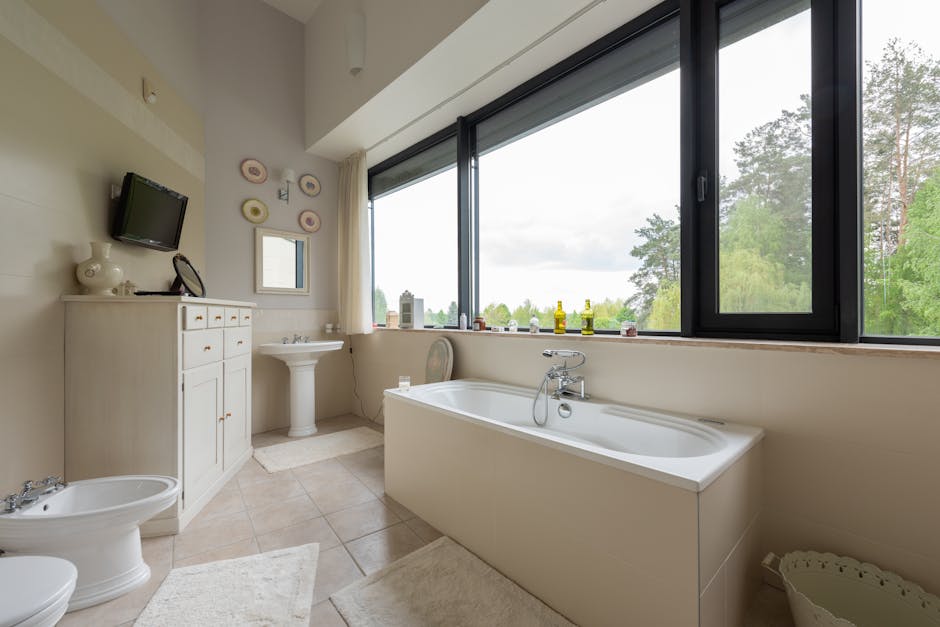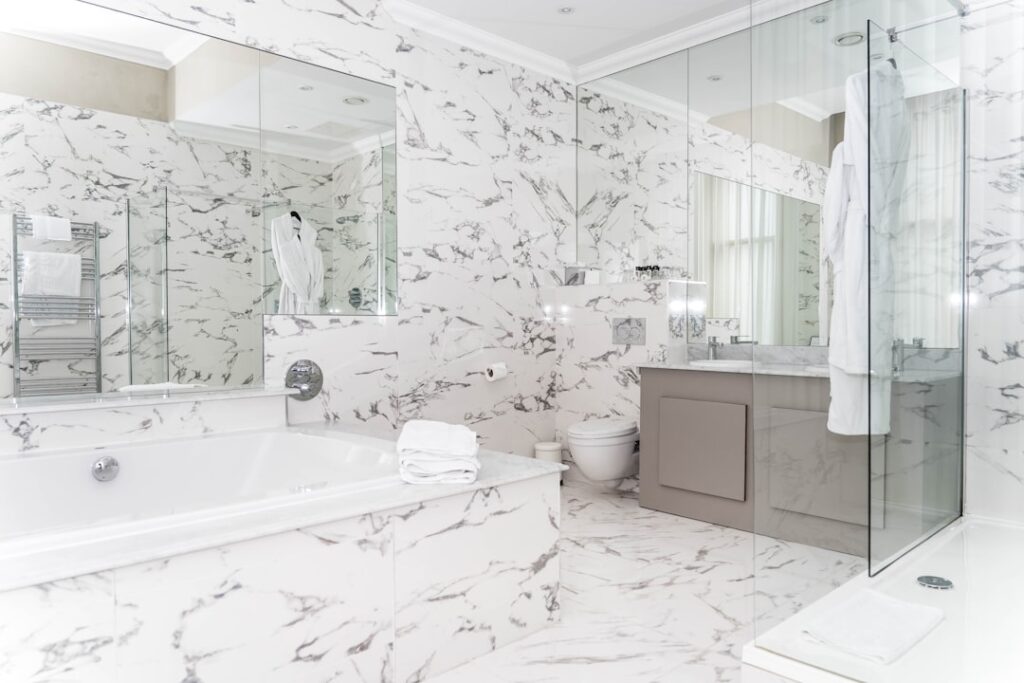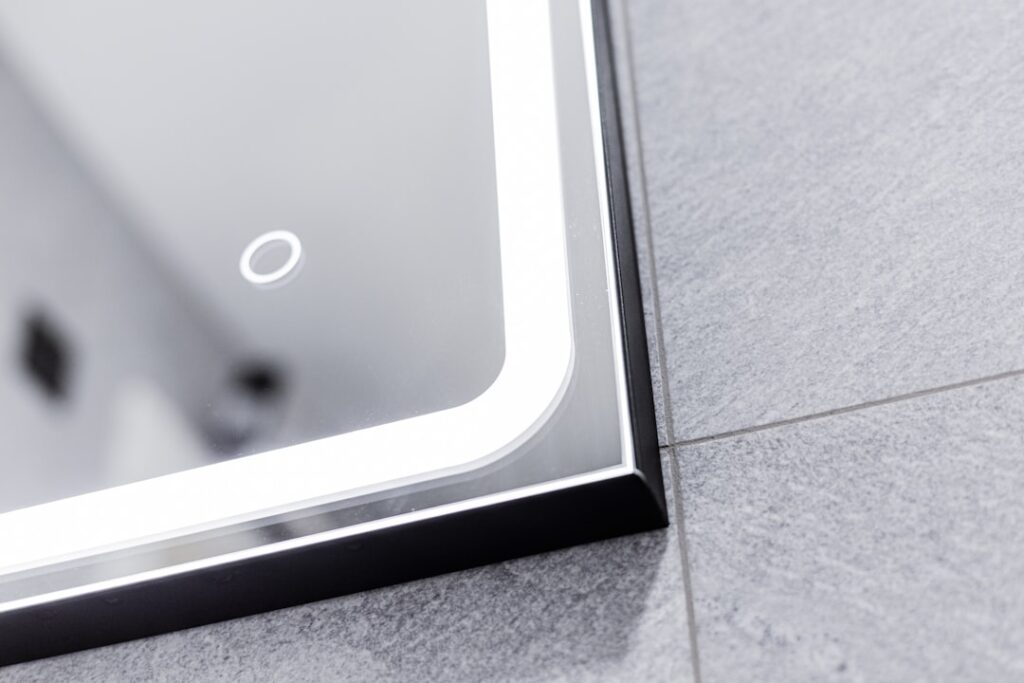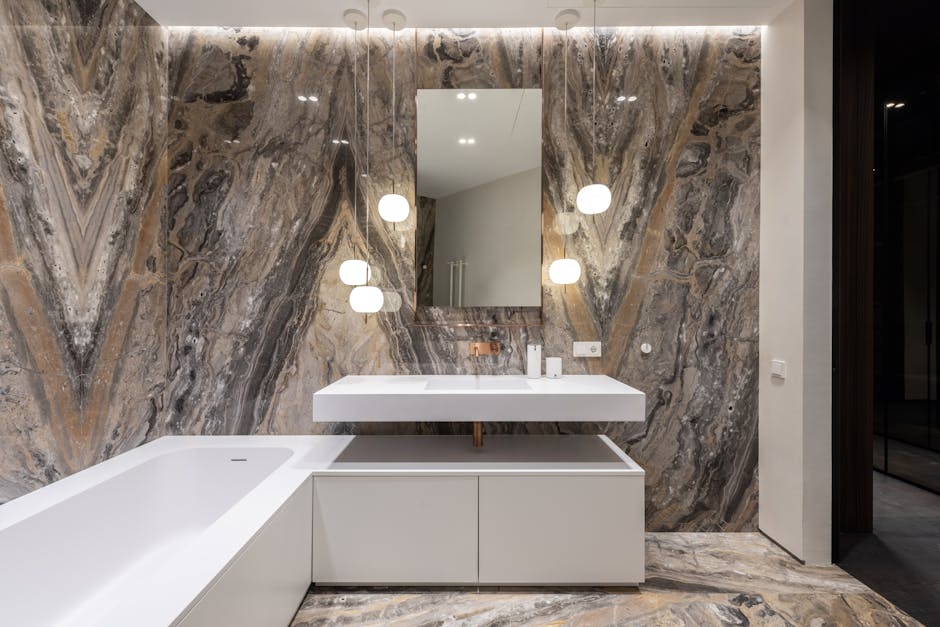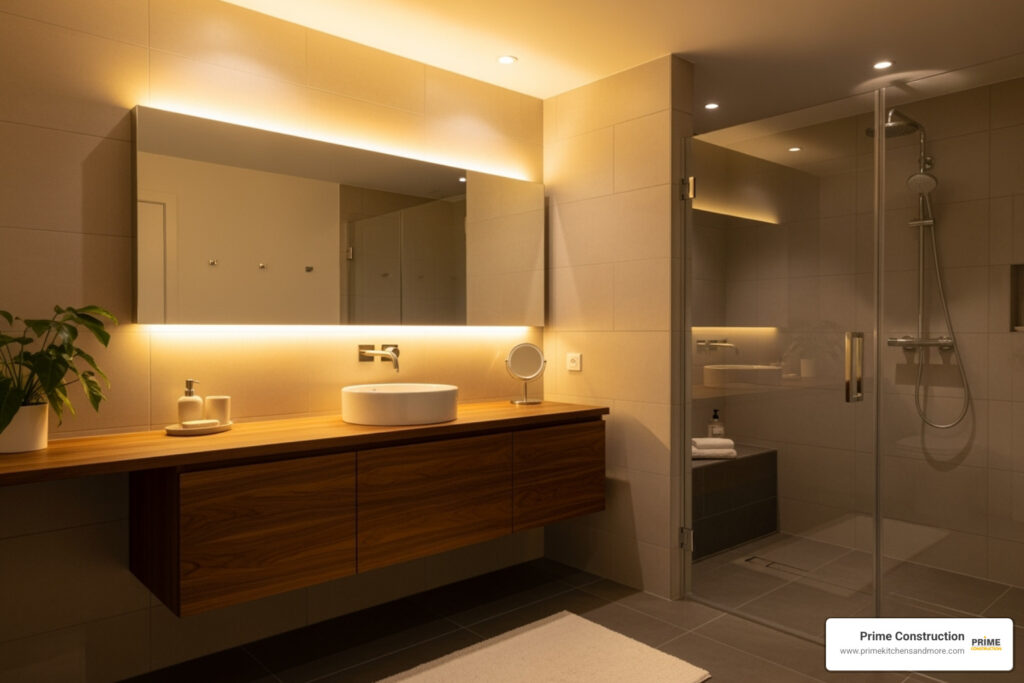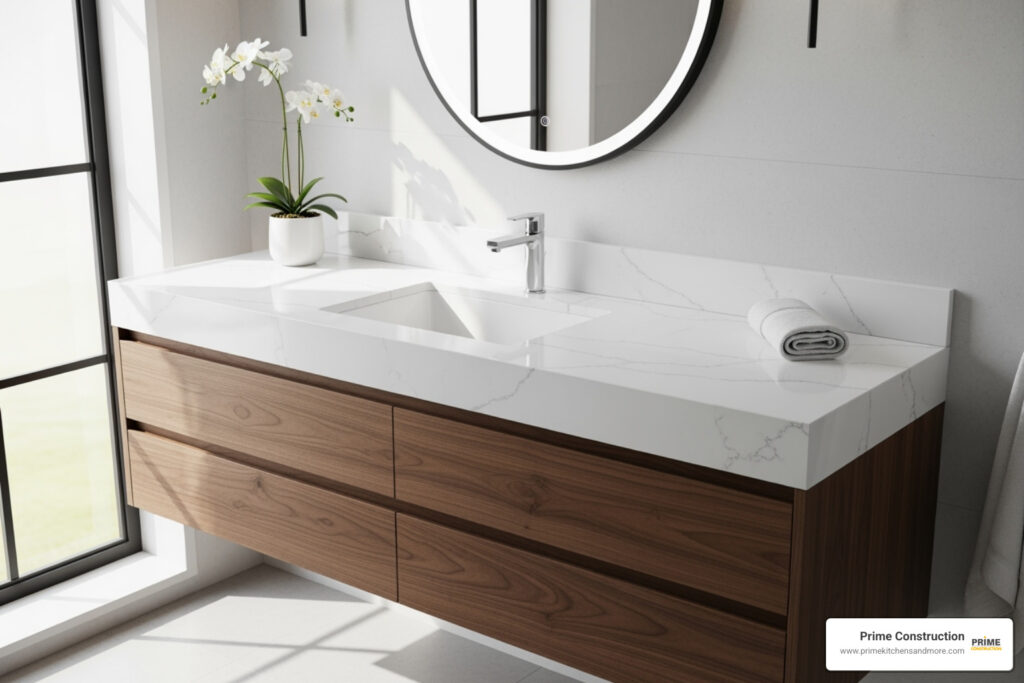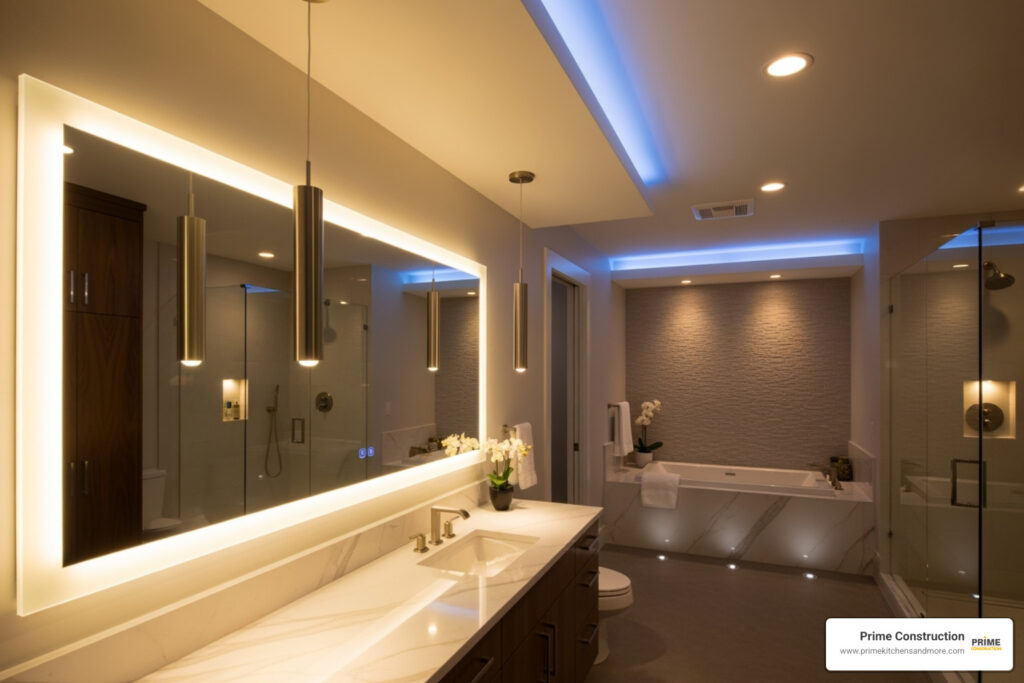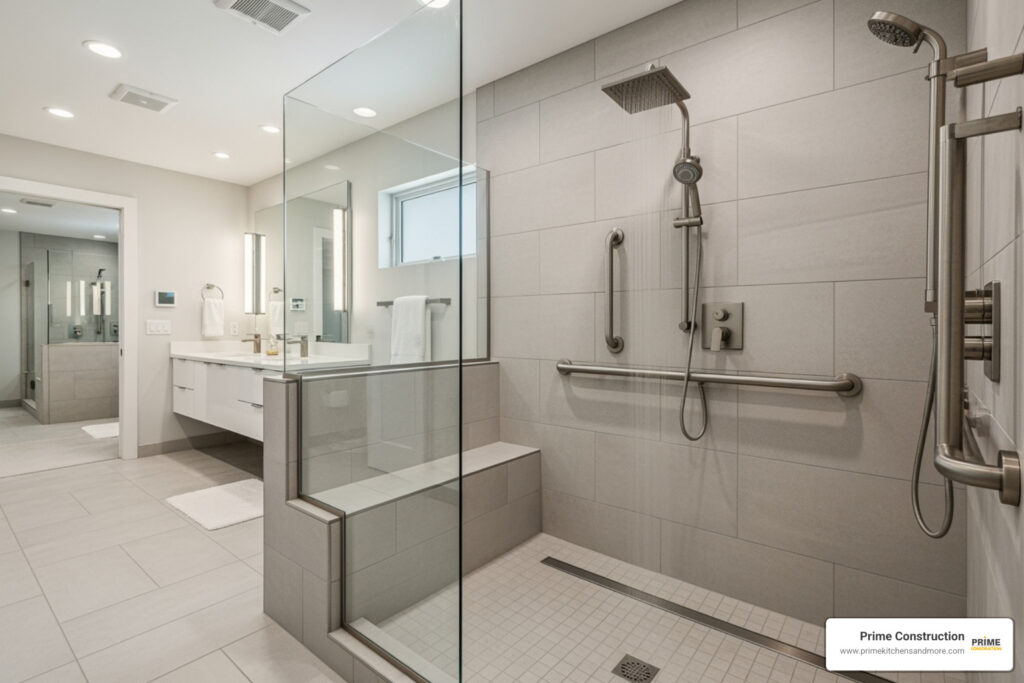Why Proper Backsplash Attachment Matters for Your Bathroom
When youattach marble backsplash vanity, you’re not just adding beauty to your bathroom – you’re creating essential protection against water damage and daily wear. Based on research from home improvement experts and professional installers, here’s the quick answer to getting it right:
Quick Steps to Attach Marble Backsplash to Vanity:
- Clean surfaceswith isopropyl alcohol and remove old caulk
- Apply construction adhesiveto the back of the backsplash in circular patterns
- Add silicone caulkalong the vanity edge where backsplash will sit
- Press firmlyagainst wall and secure with painter’s tape while curing
- Seal all seamswith 100% silicone caulk after 24 hours
Abathroom vanitybacksplash serves a crucial purpose beyond aesthetics. As one forum user finded, without proper attachment, “yellow gunk” can form in the crack between the backsplash and countertop, leading to hygiene issues and potential water damage.
The key to success lies in using the right materials. Home Depot carries 174 differentbathroom vanitybacksplashes, but the installation method matters more than the product itself. Professional installers consistently recommend100% silicone caulkover other adhesives for natural stone, as one expert noted: “GE 100% Silicone sealant is recommended for attaching cultured marble backsplashes.”
Why does this matter?Water is marble’s biggest enemy. Without proper sealing, moisture can seep behind your beautiful backsplash, causing mold, wall damage, and expensive repairs down the road.

Gathering Your Tools and Materials
To successfullyattach marble backsplash vanity, preparation is key. Having all your tools and materials within arm’s reach prevents frustrating mid-project delays and ensures the process flows smoothly.

When everything is organized and ready to go, you’ll feel more confident and the whole process will flow much smoother.
Essential Tools
Let’s start with the must-have tools that’ll make your installation a breeze. Yourcaulk gunis absolutely essential for applying both construction adhesive and silicone caulk with precision.
Yourtape measureandlevelwork as a dynamic duo to ensure everything fits perfectly and looks professionally straight. Even a slightly crooked backsplash can make your beautiful bathroom look off-kilter.
Don’t forget yourutility knifefor opening packages and scoring old caulk, plus plenty ofclean clothsfor surface prep and cleanup.Painter’s tapeis crucial – it’ll hold your backsplash in place while everything cures and help you achieve those crisp, professional caulk lines that make all the difference.
Here’s a pro tip: grab acaulk toolif you want that extra-smooth finish. While some folks swear by using a wet finger, this little tool gives you consistent, professional-looking results every time.
Recommended Materials
Now for the star players that’ll actually attach your marble backsplash to the vanity. Yourpre-cut marble backsplashcomes in various sizes – typically ranging from under an inch to 84 inches wide – so you can find the perfect fit for your vanity.
The real magic happens with your adhesives. You’ll want astone-safe construction adhesivelike theConstruction adhesivespecifically designed for marble and granite. This creates the strong bond that keeps everything secure.
For waterproofing,100% silicone caulkin kitchen and bath grade is non-negotiable. TheWaterproof Clear Silicone Caulkcreates that critical seal that prevents water damage. Make sure it’s pure silicone, not the siliconized latex versions – your marble deserves the real deal.
Don’t skip theisopropyl alcoholfor cleaning surfaces before you start. Clean surfaces mean stronger bonds, and stronger bonds mean your beautiful backsplash stays put for years to come.
A few optional helpers can make your life easier:shimsfor leveling uneven surfaces, a versatile5-in-1 toolfor scraping and smoothing, and fine-grit sandpaper if your walls need a little texture for better adhesion.
With your tools and materials gathered, you’re ready to begin.
Step-by-Step Guide to Attach Marble Backsplash Vanity
Now for the exciting part: installing your marble backsplash. This detailed walkthrough will guide you through each stage to create a secure, water-tight fit that looks professionally done.
Step 1: Prepare Your Surfaces
Proper surface preparation is essential for a bond that lasts. When youattach marble backsplash vanity, clean surfaces are non-negotiable.

Start by thoroughly cleaning the vanity top and the wall with isopropyl alcohol to remove any dust, soap residue, or grime that could weaken the adhesive bond. For textured walls, lightly sand them with 120-grit sandpaper to create a smoother surface for the adhesive. If there’s old caulk or adhesive, scrape it all away with a utility knife or5-in-1 tool.
Crucially, ensure all surfaces are completely dry before proceeding. Moisture is the enemy of good adhesion and can lead to failures, like the “yellow gunk” a forum user experienced, which proper prep prevents.
Step 2: Dry Fit and Measure
Before using any adhesive, perform a dry fit to catch potential issues. Carefully position the marble backsplash against the wall on the vanity top and use a level to ensure it’s straight. A crooked backsplash now will be permanently crooked later.
If you’re installing side splashes,position those first. They should sit flush with the front edge of your vanity and meet the main backsplash seamlessly.
While the backsplash is in position, use a pencil to mark light guidelines on the wall. These reference points are invaluable for perfect placement once the adhesive is applied.
Step 3: Apply the Right Adhesive
Choosing the right adhesive is critical, as natural stone like marble needs special consideration. Here’s what you need to know:
Construction Adhesiveprovides the strong, structural bond between your backsplash and the wall. It’s designed for heavy materials and creates a permanent hold. However, choose a stone-safe formula, as some adhesives can stain marble.
100% Silicone Caulkis your waterproofing superhero. It stays flexible, resists mold, and won’t stain natural stone. While not for heavy structural bonding, it’s perfect for sealing seams and creating watertight barriers.
For your installation, apply a generous, continuous bead of stone-safeConstruction Adhesiveto the back of your backsplash in a serpentine or circular pattern for even coverage. Next, apply a thin line of100% silicone caulkalong the vanity edge where the backsplash will sit. This creates your first line of defense against water. If installing side splashes, run a thin silicone bead along the end that will meet your main backsplash.
Step 4: Position and Secure the Backsplash
With your adhesives applied, it’s time to position the backsplash.

Lift your marble backsplash carefully, line it up with your pencil guidelines, and gently lower it onto the silicone bead on your vanity top. Nowpress firmly against the wall, applying steady, even pressure along the entire length for a minute or two to ensure maximum contact.
Use painter’s tape to create temporary braces, running strips from the backsplash up to the wall. This is especially important if your walls aren’t perfectly plumb.
Allow the adhesive to curefor the full time recommended by the manufacturer—typically 24 hours. Resist the urge to touch or adjust anything during this critical period. If any adhesive squeezes out, wipe it away immediately with a damp cloth. A tidy workspace reflects professional results. After 24 hours, you can carefully remove the painter’s tape and admire your perfectly installed marble backsplash.
Achieving a Professional Finish: Sealing and Caulking
Properly sealing the seams is crucial for a clean look and for preventing water damage to your wall and vanity. This step waterproofs your installation and gives it a polished, finished appearance.
How to Perfectly Seal the Seams
Once the construction adhesive has cured (after 24 hours), create the waterproof barrier. Use a high-quality100% pure, mold-resistant kitchen and bath silicone caulkWaterproof Clear Silicone Caulk. This flexible silicone creates a durable, watertight seal that accommodates temperature changes.
Start with themost critical seam: where your backsplash meets yourBathroom Countertops. Apply a continuous bead of silicone along this entire bottom edge. Also, seal where side splashes meet the main backsplash and the adjacent wall.
Finally, seal thetop edgewhere the backsplash meets the wall. This prevents dust buildup and stops moisture from getting behind the marble, providing a clean, professional finish.
Tips for a Clean Caulking Line
Achieving a perfect caulk line is about preparation and speed.

Tape off your work areafirst. Run painter’s tape parallel to both sides of the seam, leaving only the gap exposed for razor-sharp edges.
Cut your caulk tube tipat a 45-degree angle, creating an opening slightly smaller than the seam for better control.
Squeeze out a steady, continuous beadwhile moving at a consistent speed to avoid weak spots.
Immediately smooth the beadwith a caulk tool or a wet finger to push the caulk into the seam and create a concave finish. Work quickly, as silicone gets tacky fast.
Remove the painter’s tapewithin 5-10 minutes, before the caulk skins over. Pull it off at a 45-degree angle for the cleanest release. The result is a professional-looking, waterproof seal that protects your investment and adds value when youattach marble backsplash vanitypieces with this level of detail.
Post-Installation Care and Common Pitfalls
You’ve successfully installed your marble backsplash! Now, let’s explore how to keep it looking pristine and avoid common pitfalls.
Common Mistakes to Avoid When You Attach Marble Backsplash Vanity
Learning from common mistakes can save you from costly repairs and frustration.
Using the wrong adhesiveis the most critical error. Mastic, for example, contains water that can seep into porous marble and cause permanent staining. When youattach marble backsplash vanity, always stick with stone-safe construction adhesive and 100% silicone caulk.
Skipping proper surface preparationis a time bomb. Adhesives won’t bond to dusty or greasy surfaces. A few extra minutes of prep can mean the difference between a long-lasting installation and a 6-month disaster.
Forgetting the dry fitis a recipe for a crooked backsplash, which is incredibly difficult to fix after the adhesive is applied.
Inadequate sealingleaves your bathroom vulnerable to water damage and mold. Water can find the tiniest gaps, so every seam—bottom, sides, and top—needs proper attention.
Heavy-handed caulkinglooks amateurish and traps dirt. A clean, thin bead is more effective and looks professional.
Impatience with curing timescan weaken the entire installation. Trust the process and give the adhesive and caulk time to set properly.
If you’re feeling overwhelmed, our team at Prime Kitchens And More handlesBacksplash Installation Orlando, FLwith 15 years of experience avoiding these pitfalls.
Long-Term Maintenance for Your Marble Backsplash
Marble gets better with age when properly cared for, and maintenance is simple.
Daily cleaningrequires just a soft cloth and warm water. For weekly cleaning, choose pH-neutral cleaners designed for natural stone. Avoid acidic cleaners like vinegar or lemon juice, which will etch the surface.
Watch what touches your marble.Toothpaste, soaps, and cosmetics can contain acids that etch the stone. The key is immediate cleanup.
Sealing is your marble’s insurance policy.While likely pre-sealed, that protection wears off. Plan to reapply a penetrating stone sealer annually. Test by dropping water on the surface; if it soaks in instead of beading up, it’s time to reseal.
For detailed guidance, the Natural Stone Institute offers excellent resourcesMore info about stone care.
Stain removal requires quick action.Blot spills immediately—don’t wipe. For stubborn stains, specific poultices can help, but it may be worth consulting a professional.
Special Considerations When You Attach Marble Backsplash Vanity
Understanding these nuances can make the difference between a good installation and a great one.
Natural marble versus cultured marblerequires different approaches. Natural marble is heavier and more porous, benefiting from the construction adhesive plus silicone method. Cultured marble is less porous, and some pros use 100% silicone as both adhesive and sealant.
Porosity varieseven among natural marbles. Lighter varieties can be prone to showing stains from the wrong adhesives, which is why stone-safe products are essential.
Your vanity material matters.Ensure your countertop is properly secured and level before starting. An unstable base leads to problems. Our expertise inCustom Made Counter Topsgives us insight into how different materials work together.
Wall surfaces present their own challenges.Painted drywall is common, but tile or textured surfaces require specific prep to ensure a good adhesive grip.
Frequently Asked Questions about Attaching a Vanity Backsplash
We get these questions all the time from homeowners in Orlando and throughout Central Florida. After 15 years of installing backsplashes, we’ve learned that most folks have the same concerns when they’re ready toattach marble backsplash vanitypieces.
What’s better for attaching a marble backsplash: silicone or construction adhesive?
Here’s the thing – you actually need both! Think of it like building a house: you need a strong foundationandweatherproofing.
Thestone-safe construction adhesivegoes on the back of your marble backsplash and creates the main bond with your wall. This is your workhorse – it’s what actually holds that heavy piece of marble in place. Without it, you’d be asking silicone to do a job it wasn’t designed for.
Then comes the100% silicone caulk, which creates your waterproof seal where the backsplash meets the countertop. This flexible barrier is what keeps water from sneaking behind your beautiful new backsplash and causing problems down the road.
We’ve seen too many DIY attempts where someone tried to use just one or the other. Trust us – the combination approach is what gives you both the strength and the water protection your bathroom needs.
Do I have to seal the top of the backsplash to the wall?
Absolutely, and here’s why this matters more than you might think. That little gap at the top might seem harmless, but it’s like leaving your front door cracked open for dust, grime, and moisture.
A thin bead ofpaintable caulk(or silicone if you prefer a completely waterproof seal) along that top edge does two important things. First, it keeps your backsplash looking clean by preventing that annoying dust buildup that happens in bathroom crevices. Second, and more importantly, it stops water from trickling down behind your backsplash.
You might be surprised how much moisture can find its way into that tiny gap over time. We’ve seen wall damage from homeowners who skipped this simple step, thinking it wasn’t necessary. A few minutes of caulking now saves you from potential headaches later.
How long should I wait before using the vanity after installing the backsplash?
Patience is your friend here – wait at least24 hoursbefore getting that vanity back to normal use. We know it’s tempting to test everything out right away, especially after all that hard work, but good things come to those who wait.
Both your construction adhesive and silicone caulk need this full day to cure properly. Think of it like letting concrete set – you wouldn’t drive on fresh concrete, right? Same principle applies here.
During this waiting period, avoid splashing water on the backsplash or putting any pressure on it. Keep the bathroom well-ventilated if possible, as good airflow helps the curing process.
Always check the specific product labels though – some adhesives might need a bit more time depending on temperature and humidity. In Florida’s climate, we sometimes recommend giving it the full 24 hours plus a few extra hours just to be safe.
Once that curing time is up, you’ll have a rock-solid installation that’s ready for years of daily use!
Conclusion
Installing a marble backsplash is a rewarding DIY project that lifts your bathroom’s style and functionality. By carefully preparing your surfaces, using the correct adhesives, and thoughtfully sealing the seams, you can achieve a durable, professional finish. The journey toattach marble backsplash vanitymight seem intricate at first, but with the right guidance and materials, it’s entirely achievable for most homeowners.
We’ve walked through every step together – from gathering your tools and preparing those surfaces to applying the perfect combination of construction adhesive and silicone caulk. The key to success lies in patience during the curing process and attention to detail when sealing those critical seams. Your bathroom will thank you for the extra care!
While this comprehensive guide empowers you to tackle the job with confidence, some projects benefit from professional expertise. For a flawless result as part of a largerBathroom Remodeling Orlando, FLproject, the team at Prime Kitchens And More brings 15 years of hands-on experience to every installation. We understand the unique challenges of working with natural stone and the importance of proper waterproofing in Florida’s humid climate.
Whether you’re in Orlando, Orange County, Seminole County, Winter Park, Apopka, Windermere, Lake Buena Vista, Kissimmee, or Zellwood, our commitment to premium materials and high-quality results remains unwavering. We’ve seen how a beautifully installed marble backsplash can transform a bathroom from ordinary to extraordinary.
Ready to transform your bathroom with a new vanity and backsplash? Contact us for professionalBathroom Vanity Installation Orlandoand get a free quote today! Sometimes the peace of mind that comes with professional installation is worth every penny.



